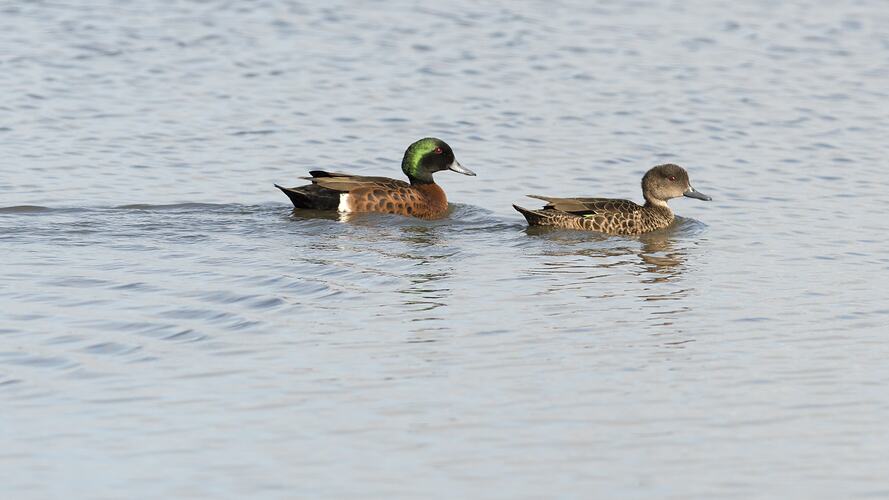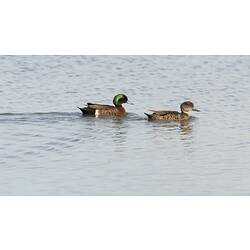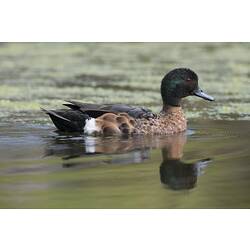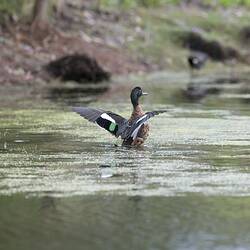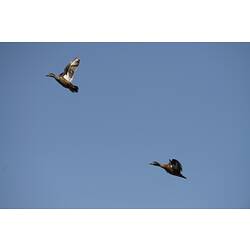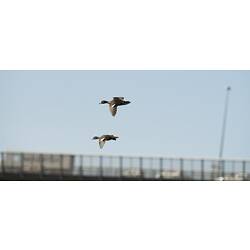General Description
Males: iridescent bottle-green head and neck, brown upper parts, chestnut underparts with a conspicuous white patch under the tail. Females: mottled brown all over. Both sexes have a red iris and an iridescent green patch (speculum) in the wing. Bill to tail length up to 50 cm.
Biology
Chestnut Teal feed on seeds, vegetation, molluscs and crustaceans. Like other ducks, they have comb-like structures (lamellae) along the inside edge of their bill. These work like a strainer, trapping food particles for the duck to swallow. Chestnut Teal mostly nest in tree hollows, with some nests in vegetation on the ground. They will also use nest boxes. They are one of the few species of Australian duck that tolerates high-salinity waters.
Distribution
South-eastern and south-western coasts of mainland Australia
Habitat
Freshwater and saltwater wetlands.
More Information
-
Animal Type
-
Animal SubType
-
Brief Id
A small duck that feeds by dabbling and upending. Males are chestnut with a green head, females are mottled brown.
-
Colours
Brown, Green, Red
-
Maximum Size
50 cm
-
Habitats
-
Diet
Omnivore
-
Diet Categories
Seeds, Plants, Molluscs, Crustaceans
-
Endemicity
-
Commercial
No
-
Conservation Statuses
CITES: Not listed, FFG Threatened List: Not listed, EPBC Act 1999: Not listed, IUCN Red List: Least Concern
-
Taxon Name
-
Common Name
Chestnut Teal
-
Other Names
Chestnut-breasted Teal
-
Kingdom
-
Phylum
-
Subphylum
-
Class
-
Subclass
-
Order
-
Family
-
Subfamily
-
Genus
-
Species Name
castanea
